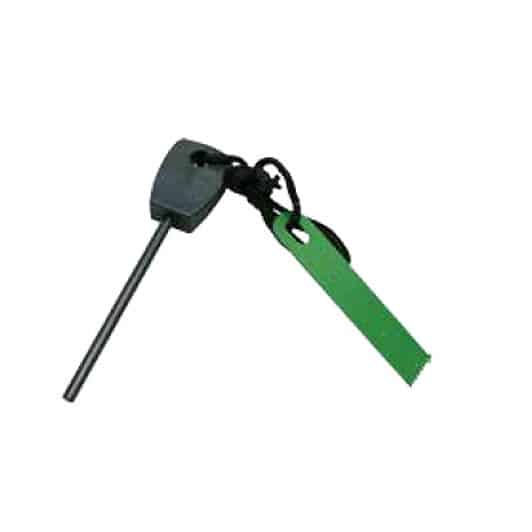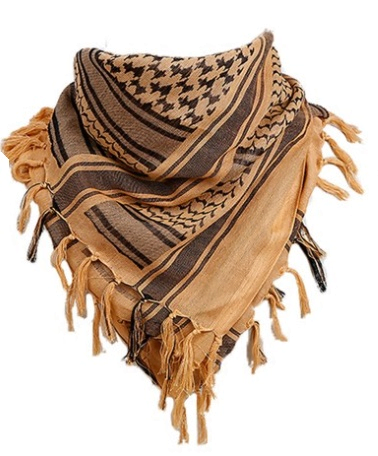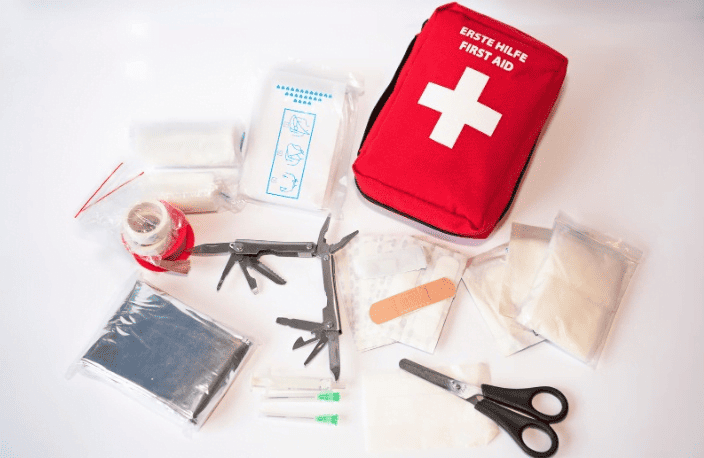As far as the most important survival items to always carry with you…there is always some debate to what are the most important – the absolutely essential pieces of kit to carry with you in the event of a survival situation.
Of course, we may not always have the luxury of being able to have with us these essential 16 items whenever we venture out – but it does pay to be prepared!
The essential gear you take with you will even depend in some degree to which country you’re venturing out into the wilderness in, with the given climate, terrain and season, for example. Find out more about how you can be properly prepared for an emergency here.
The majority of Australians travel frequently, either for pleasure or as part of their job…and they often like to explore further afield and enjoy what nature has to offer off the beaten track.
After all, this is where you’re most likely to find those more remote, untouched places that make us feel like we’re the only ones in the world who have ever experienced that particular slice of paradise.
Unfortunately, the reality is that many people head into these remote areas without the proper equipment and without the correct emergency preparedness for something going wrong, or even for a life-or-death situation!
This can also be true of an urban environment as it is for a remote wilderness adventure, where the right knowledge and the right set of practical survival skills can make all the difference.
Statistically, the most common group of people who get into trouble are day hikers or visitors. This makes a lot of sense when you consider that their thinking is likely to be based around the belief that they’ll only be going into the wild for a few hours, so they don’t tell anybody where they’re going or when they’ll be back.
They will also unlikely pack the right type of gear or any equipment from our most important survival items…and many don’t have even the most essential basic survival knowledge that could easily save their life should it come down to it.
Telling friends and loved ones where you’re going and when you plan on returning is an important aspect of the planning and preparation stage, as is carrying the correct equipment with you should you get into strife.
Here are 16 of the most important survival items you should always carry in your pack when travelling into a wilderness area. Each of these items should be hard-wearing, easy to carry and have multiple uses.
The first 3 items are the most critical as they are items that are very difficult and / or require a huge amount of energy and time to replicate in the field if you don’t have them.
Items four and five are also extremely important to have with you at all times when heading off for a trip into the bush.
Knowing what essential kit to carry with you will help you prioritise when it comes to packing correctly for your trip and also what sized daypack or rucksack you’ll need to fit these and other items, such as spare clothing etc.
It’s most likely that you’ll also need the same gear for an urban crisis or emergency…although the resources available to you may well change. You will, however, follow the same priorities as you would out in the wilderness.
16 ESSENTIAL SURVIVAL ITEMS YOU SHOULD CARRY:
Survival knife
This is probably the most important survival item on this list!
The first thing to look for with a survival knife is that it should ideally be between 4 and 5 inches in length – no more. Larger knives are useful for field knives and camp knives, but for a survival knife, this needs to be slightly smaller for ease of maneuverability etc.
The second key thing to look for is that it should ideally have a full tang. This is because it is highly likely that you will need to ‘baton’ the spine of your knife to cut through small tree limbs or branches etc when making natural shelters, as one example.
With a good cutting tool at your side, there are so many things you can use your survival knife for.
If you’d like to learn more about our Top Tips on how to choose the right survival knife, check out our article here.
Fire steel / ferrocerium rod (for fire lighting)
 A fire steel, Ferro Rod, magnesium fire starter (there are a few different types and names) is one of the most practical and reliable pieces of survival equipment you can carry with you and could easily save your life in an emergency. They’re lightweight, easy to use, and will work just as well if they’ve been submerged in water when you have to cross a river etc. They’ll also last for ages, with many of them providing between 3,000 and 5,000 strikes – some even higher depending on the type.
A fire steel, Ferro Rod, magnesium fire starter (there are a few different types and names) is one of the most practical and reliable pieces of survival equipment you can carry with you and could easily save your life in an emergency. They’re lightweight, easy to use, and will work just as well if they’ve been submerged in water when you have to cross a river etc. They’ll also last for ages, with many of them providing between 3,000 and 5,000 strikes – some even higher depending on the type.
Metal bottle or metal canteen with lid (for carrying & boiling water)
This item is a must-carry, as it is very hard (although not impossible) to replicate an effective water transportation device in nature. Yes, you can make water gourds etc…but these take time and you won’t often come across the right resources where you are. What you can’t find in nature though, is the material to make a cup, bottle or canteen which you can place over a fire to boil water in.
Tarp / emergency blanket / emergency sleeping bag
When you consider the Top 5 survival priorities, shelter / protection is typically your number 1 priority in almost any situation. Carrying a tarp or emergency blanket etc with you is a great way to ensure you have something with you ready to protect you from the worst of the elements. They’re generally fairly lightweight, and many can be folded up into small bundles for easy of transporting. You can use them above or below you…or both – and you can use them to reflect the heat from a fire if they’re the reflective silver kind. You can also use them in conjunction with natural materials.
Paracord / cordage
Paracord or an equivalent is useful for just about everything in a survival scenario. You can use it for binding, lashing items together, securing tarps etc as an improvised guy rope, hanging food out of the way of animals, creating snares, you can plait it for thicker and more sturdy rope, as well as hundreds of other things. While you can make natural cordage using a number of plants, the process requires separating the plant fibres from the stems etc, making it quite laborious and inefficient. There are also some plants you can use straight from nature (like certain vines), however, these are not always easy to come by in various regions – and especially higher up in mountainous terrain.
Compass / analogue watch
Taking a compass is always a good idea for navigation and direction finding…IF you know how to use one. An analogue watch can also be used as a makeshift compass when using the sun to help determine direction. We teach this important survival skill here at Survival Courses Tasmania. View our courses to learn more about natural navigation.
Shemagh
 There are so many varied ways you can use a cloth shemagh or large bandanna. Also known as a keffiyeh in some cultures, shemaghs are large (usually 1m x 1m) square pieces of cotton (mostly), which are designed in fine patterns and often folded diagonally to form a large triangle. Many soldiers use them in desert terrain. These can then either be rolled or used in a number of different formats to cover the head and neck in hot, sunny regions for protection, or used as a triangular bandage in the field, for example. They can be used to improvise a crude water filter (for larger debris) prior to boiling the water, or to tie objects together…or just about anything you can think of.
There are so many varied ways you can use a cloth shemagh or large bandanna. Also known as a keffiyeh in some cultures, shemaghs are large (usually 1m x 1m) square pieces of cotton (mostly), which are designed in fine patterns and often folded diagonally to form a large triangle. Many soldiers use them in desert terrain. These can then either be rolled or used in a number of different formats to cover the head and neck in hot, sunny regions for protection, or used as a triangular bandage in the field, for example. They can be used to improvise a crude water filter (for larger debris) prior to boiling the water, or to tie objects together…or just about anything you can think of.
Tinder (something that will take a spark)
Despite there being a number of natural resources you can use as tinder in the wild, there isn’t always easy access to tinder. For example, in the mountains – the higher up you go, the less vegetation there is, so it’s always wise to carry something that you know you can rely on in an emergency. When the time comes that you have to light a fire in only a few minutes (to stave off hypothermia after being immersed in freezing cold water), you will want to have with you some tinder that’s dependable and dry. There are lots of different household items you can use as tinder.
Multitool with pliers
Many of you will already use a multitool for numerous, diverse applications. As the name suggests, this tool really can be used for just about anything, depending on the model you have. With the addition of pliers, again, this is a mechanism that’s not easily replicated in mother nature. You can pry things open, tighten objets, detach small pieces of metal and do all sorts with a multitool.
Water purification tablets
It’s a good idea to take some water purification tablets (or other means of water purification) with you. While nature can provide a few resources to help with this, water is one of your top priorities, especially when you’re in a survival situation. Typically, these tablets make water safe to drink from parasites and other naturally occurring nasties in water sources you may come across.
Head torch
While a fire will provide a good amount of light once you have one going, there’s nothing like a head torch for more detailed and close-up illumination. Additionally, if you have to walk after dark, or it’s winter and it’s dark before you’ve had a chance to build a shelter or light your fire, then this item will allow you to work hands-free.
Personal First Aid Kit
 As with almost any trip or adventure, you should always carry with you a decent first aid kit that’s been checked regularly. This should include at the very least: any medications required, surgical gloves, a scalpel, plasters, assorted needles, suture, hydration salts / electrolytes, Paracetamol, antiseptic wipes etc.
As with almost any trip or adventure, you should always carry with you a decent first aid kit that’s been checked regularly. This should include at the very least: any medications required, surgical gloves, a scalpel, plasters, assorted needles, suture, hydration salts / electrolytes, Paracetamol, antiseptic wipes etc.
Duct Tape / Cloth Tape
Again, duct tape has thousands of different uses. You can use it to repair kit (tears in ponchos or tarps etc), use as extra cordage, to strap objects down, to waterproof objects temporarily. Large rolls of duct tape can be pretty heavy, so it’s worth transferring half to a separate roll for easy of carrying.
EPIRB / PLB
Despite needing to rely on (generally) lithium-ion batteries, which can become depleted very quickly in cold and wet weather, this is an absolute must to carry in the case of dire emergency and when your life’s on the line. Two different systems…but effectively do the same thing, the EPIRB (Emergency Position Indicating Radio Beacon), and the PLB (Personal Locator Beacon).
Mini Saw
In the field, a decent survival knife is your number 1 tool. It can happily chop through poles as thick as your wrist to give you what you need for making a natural shelter and so much more. However, this takes time and effort. Quite simply, having a mini saw makes life a whole lot easier and much, much faster – saving you energy and time.
Tea or Coffee etc
This item I’ve mainly added for morale…because morale is vital as part of ‘survival psychology.’ Taking some tea or coffee (or other preferred beverage) can give you a real boost of morale and even energy in the field. It can force you to take a break and sit down for a few minutes while you boil the water, which can also give your mind valuable time to think and assess your situation. A hot drink in the morning can also help set you up for the day ahead when out in unfamiliar surroundings.
The most important survival items above is intended as the priorities of what essential gear you should always carry with you.
See more of our survival and bushcraft blogs here.
For a definition and description of a shemagh of keffiyeh , you can look at this article.
